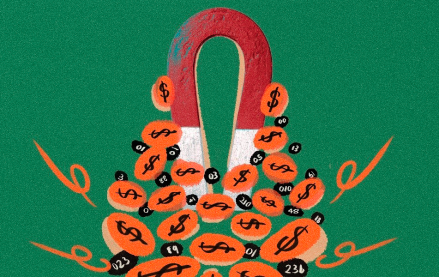
This article is part of the Digiday Partner Program and is brought to you by DataXu.
Even in this age, where data can inform every digital media buying decision, and the buyer is more empowered than ever before, things can get confusing. There are acronyms galore, new and obscure technology and an avalanche of numbers that can complicate what should be a simple process of getting the most bang for your buck.
“Knowing the right questions to ask is imperative,” said Matt Barash, former vice president of audience monetization for Forbes. “But you’ve got something that’s changing by the quarter, and you’ve got to know the dynamics of how the conversation is changing… The best questions are often the simplest, and you’ve really got to drill down.”
To help with the process, here are a few questions you should consider asking:
1. Can you clarify that?
The media world is confusing and there are people who try to hide what they’re doing behind a bevy of numbers, terms and other information as they try to close the deal. When something gets complex, don’t be afraid to ask someone to repeat what he’s said in simpler terms.
“It’s important that marketers and agencies don’t back off when something gets really technical,” said Curt Hecht, chief revenue officer for The Weather Company, who previously held positions as president of VivaKi’s Nerve Center and chief digital officer of Starcom MediaVest Group.
2. How many intermediaries are there between me and my ad?
In an ideal world, transactions would occur directly between a buyer and a vendor, making the process simple and clear. But with new ad servers, demand-side-platforms and retargeting systems, the number of layers between a buyer and the ad can be filled with other parties, some of whom might be invisible to you. Knowing who they are will help you better understand how information is being processed and inventoried.
“[Transparency] is achievable when the principals react,” Barash said. “It becomes harder the more intermediaries there are. Once you’ve got aggregation, you’ve an iceberg situation, where most [of the information] is below the surface.”
That’s not to say you should be wary every time an intermediary is brought in, but it is important to know who they are and what value they provide. “If exchanges are smart about how they bring on partners, they will vet them properly so you know that what you see is what you get.”
3. Do you proactively provide viewability data?
Right now, the buzz word in media buying circles is “viewability,” measuring the ability for a Web user to see a given ad for a given period of time. Any vendor’s viewability metrics should at least be accredited by the Media Ratings Council, and follow some generally accepted guidelines (right now, the accepted standard is that an ad must be at least half in view for at least one second).
Any vendor or verification service should be confident that their results will meet these outside standards, said Andrew Casale, vice president of strategy at Casale Media. “You should be wary when they say, ‘I have a proprietary method of viewability and it can’t be verified.’”
You should also be wary when they only use one vendor to verify their placements, Casale said. “Their ads may only be viewable because there may be a loophole in that particular standard,” he said.
4. What other metrics are you using?
However effective viewability might be (or could be), it can’t exist in a vacuum. The biggest benefit viewability brings is its ability to inform other metrics (such as click through rates) to help determine if a specific ad buy or placement is working.
“There are better proxies to understanding an ad’s [effectiveness] beyond the viewable impression,” said Greg Kahn, chief business development officer at MXM. “It’s important to examine what happens after the view[er sees it].”
5. How granular is your data?
This is the age of data, and there’s more information at your fingertips than ever.
Ideally, you want information on a url-level, telling you exactly what websites your ad has been and the individual results for those sites. If something looks out of whack, find out why.
“It’s very elementary,” Barash said. “I would look on a publisher by publisher level. What was my click-through-rate and was any one of them outside of a respectable number, that’s when it would raise an eyebrow.”
At the end of the day, media buying has largely been a relationship-based business, and that continues even with more tools at your disposal. There’s a level of trust that needs to be established (keeping in mind these tools can help, to paraphrase Reagan, verify that trust) to ensure strong business practices. Buyers have a right to receive answers that are satisfactory.
“It’s asking the simple question, and being assured that I’m getting the value for what I’m spending,” he said.
More from Digiday
Sliders test article
Amazon bulldozes into new markets, upending the status quo and challenging rivals. Today, it’s the turn of the ad-supported streaming world, and Amazon is coming out of the gate strong. Why, you ask? Because Amazon is serving marketers an opportunity beginning today to reach a whopping 115 million monthly viewers in the U.S. alone, courtesy […]

How CTV and DOOH are growing this political season for smaller agencies
Connected TV and digital out-of-home are playing a bigger role in upcoming elections and politics – especially for smaller agencies looking to place clients’ dollars.

CMO Strategies: Advertisers identify the top attributes on ad-supported streaming platforms
This is the third installment in Digiday’s multi-part series covering the top ad-supported streaming services and part of Digiday’s CMO Strategies series. In this report, we examine which ad attributes matter the most to marketers on streaming platforms.
Ad position: web_bfu